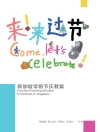This resource is ideal for anyone working with young people in grades 9-12, whether in schools or in non-formal educational settings. Richly illustrated, it offers fifty teaching strategies that promote learning about natural systems and foster critical thinking about environmental issues, both local and global. It contains new approaches to learning, strategies for living sustainably, and numerous activities that promote interdisciplinary learning. In addition, the book provides suggestions for how best to green individual subject areas, develop integrated learning programs, or replicate exemplary programs created by innovative schools and communities.
Containing contributions from over sixty educators from across North America, the book’s strength lies in its diverse content. Readers learn how best to apply systems thinking, teach about controversial issues, and use a step-by-step approach to creative problem-solving in environmental projects. Also provided are instructions for measuring the ecological footprint of a high school, creating an indoor “living system” that cleans water, monitoring air quality with lichens, and using green technologies to help green school campuses. Many articles and activities engage teenagers in outdoor learning and community restoration projects. Suggestions are included for connecting students with special needs to the environment around them.
Readers will find accessible background information and suggestions for many practical projects and activities. It is sure to appeal to a wide range of teachers, educators, and parents seeking innovative ideas for incorporating green themes into their programs.
Tim Grant and Gail Littlejohn are the editors of Green Teacher magazine, North America’s award-winning environmental teaching resource.
O autorze
Tim Grant and Gail Littlejohn are former high school teachers and the editors of Green Teacher magazine. Published in Toronto since 1991, Green Teacher is an award-winning non-profit quarterly offering practical ideas for K-12 educators and parents who seek to foster environmental literacy and global awareness in young people.












